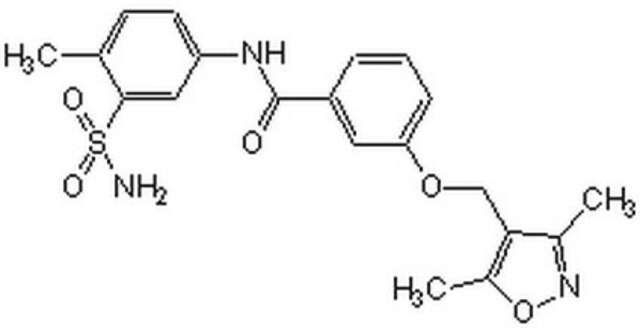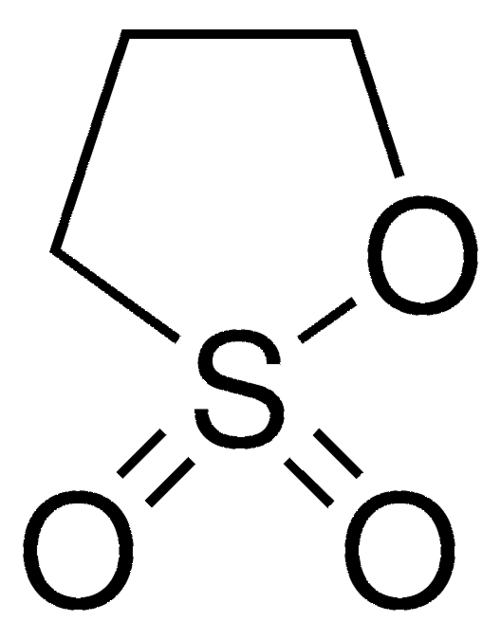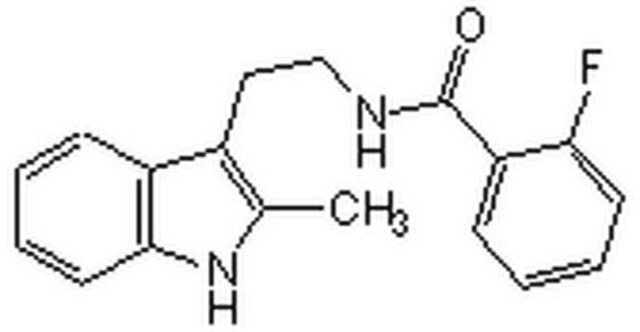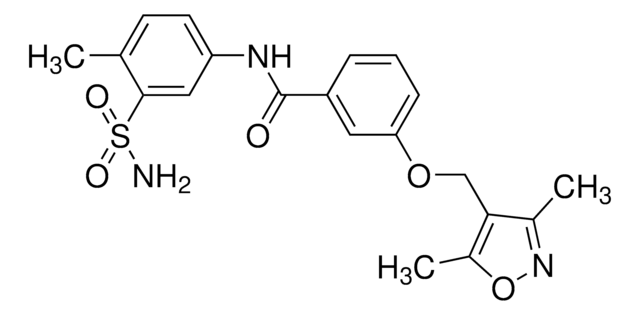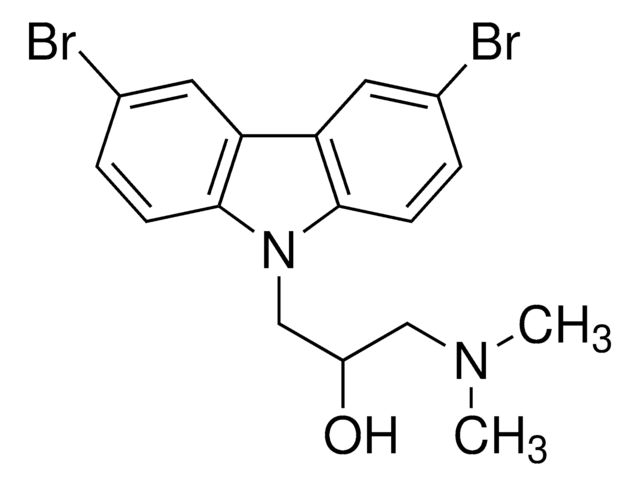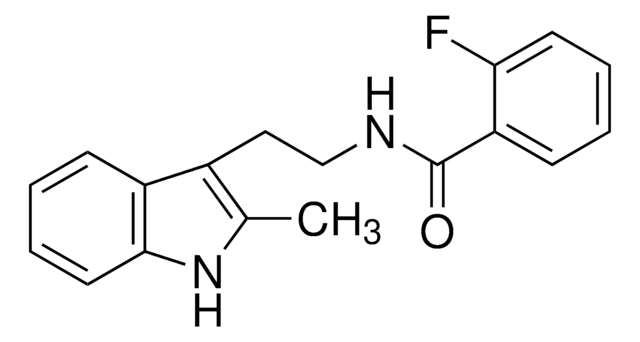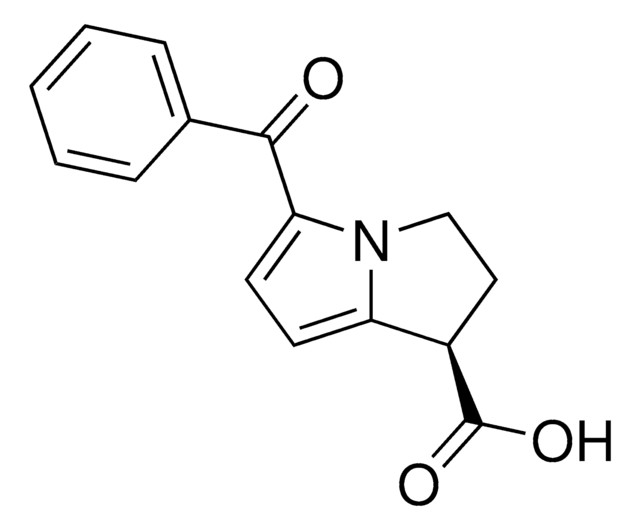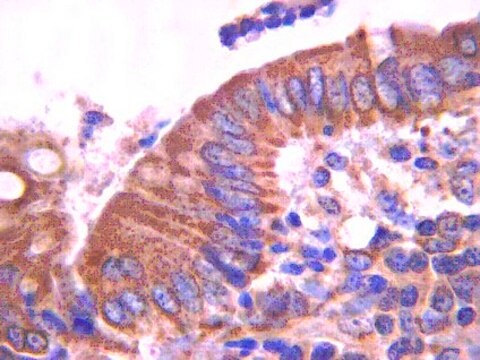Wichtige Dokumente
SML0407
ML 141
≥98% (HPLC)
Synonym(e):
4-[4,5-Dihydro-5-(4-methoxyphenyl)-3-phenyl-1H-pyrazol-1-yl]-benzenesulfonamide
About This Item
Empfohlene Produkte
Qualitätsniveau
Assay
≥98% (HPLC)
Form
powder
Farbe
white to beige
Löslichkeit
DMSO: 5 mg/mL (warmed, clear solution)
Lagertemp.
2-8°C
SMILES String
NS(C1=CC=C(C=C1)N2N=C(C3=CC=CC=C3)CC2C4=CC=C(OC)C=C4)(=O)=O
InChI
1S/C22H21N3O3S/c1-28-19-11-7-17(8-12-19)22-15-21(16-5-3-2-4-6-16)24-25(22)18-9-13-20(14-10-18)29(23,26)27/h2-14,22H,15H2,1H3,(H2,23,26,27)
InChIKey
QBNZBMVRFYREHK-UHFFFAOYSA-N
Verwandte Kategorien
Anwendung
- to inhibit CDC42 GTPase in human immortalized gingival epithelial (HIGE) cells
- as inhibitors of Rho kinase to study the role of small Rho GTPases on localization of peripheral nuclei
- as actin regulator inhibitor, to determine which actin regulators and nucleators are involved in the assembly of F-actin cages around damaged mitochondria
- as a selective, non-competitive inhibitor of Cdc42 to treat CCD-1070Sk cells
Biochem./physiol. Wirkung
Leistungsmerkmale und Vorteile
Lagerklassenschlüssel
11 - Combustible Solids
WGK
WGK 3
Flammpunkt (°F)
Not applicable
Flammpunkt (°C)
Not applicable
Hier finden Sie alle aktuellen Versionen:
Analysenzertifikate (COA)
Die passende Version wird nicht angezeigt?
Wenn Sie eine bestimmte Version benötigen, können Sie anhand der Lot- oder Chargennummer nach einem spezifischen Zertifikat suchen.
Besitzen Sie dieses Produkt bereits?
In der Dokumentenbibliothek finden Sie die Dokumentation zu den Produkten, die Sie kürzlich erworben haben.
Kunden haben sich ebenfalls angesehen
Unser Team von Wissenschaftlern verfügt über Erfahrung in allen Forschungsbereichen einschließlich Life Science, Materialwissenschaften, chemischer Synthese, Chromatographie, Analytik und vielen mehr..
Setzen Sie sich mit dem technischen Dienst in Verbindung.